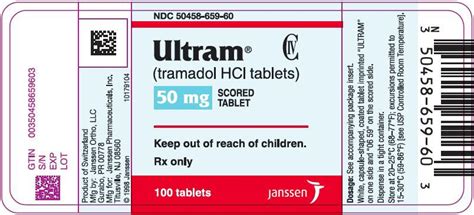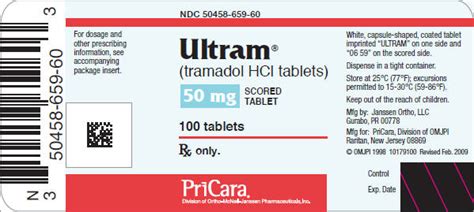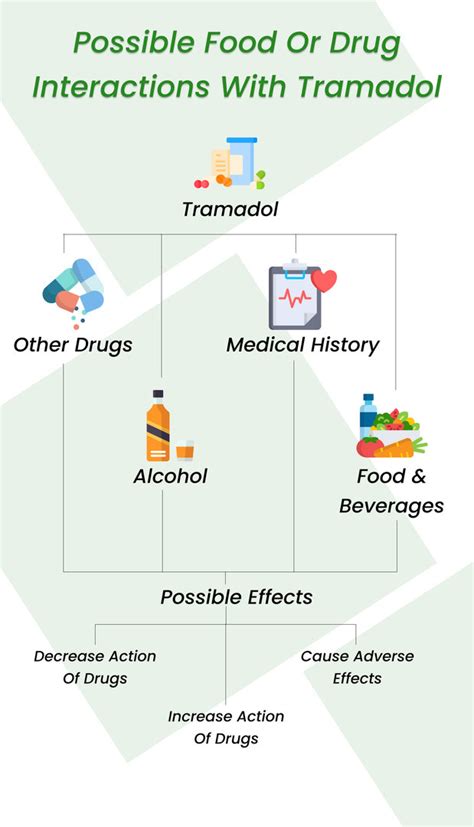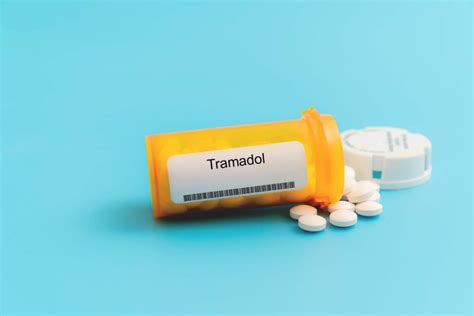Intro
Discover key Tramadol facts, including its effects, dosage, and risks. Learn about this pain relievers benefits, side effects, and interactions, ensuring safe use and medication management.
Tramadol is a medication that has been widely used for pain relief, but its usage and effects are often shrouded in mystery. As a result, many people are unaware of the key facts surrounding this drug. Understanding these facts can help individuals make informed decisions about their health and pain management. The importance of being informed about tramadol cannot be overstated, especially given its potential for dependency and the need for responsible usage. By delving into the specifics of tramadol, including its mechanism of action, side effects, and legal status, individuals can better navigate the complex landscape of pain relief options.
The history of tramadol dates back to the 1970s when it was first developed in Germany. Initially, it was marketed as a safer alternative to other opioids due to its dual mechanism of action, which combines opioid and non-opioid pathways to provide pain relief. This unique mechanism has contributed to its popularity among both healthcare providers and patients seeking effective pain management solutions. However, the rise in tramadol prescriptions has also led to concerns about misuse, abuse, and dependency, highlighting the need for education and awareness about the proper use of this medication.
The increasing awareness about opioid addiction and the risks associated with long-term use of opioid medications has led to a reevaluation of tramadol's role in pain management. Despite being considered a safer opioid, tramadol's potential for abuse and its side effects profile necessitate careful consideration and monitoring. Healthcare professionals are now more cautious in prescribing tramadol, often opting for a more holistic approach to pain management that may include non-pharmacological interventions, lifestyle changes, and alternative medications. This shift underscores the importance of understanding the multifaceted nature of pain and the need for personalized treatment plans.
What is Tramadol?

Benefits of Tramadol
The benefits of tramadol include its effectiveness in managing pain that has not responded well to other medications. It is often prescribed for patients who require around-the-clock pain relief and for whom alternative treatments have failed. Tramadol's oral formulation makes it easy to administer, and its relatively long half-life allows for less frequent dosing compared to some other pain medications. Additionally, tramadol has been found to have a lower risk of dependency compared to some other opioids, although this risk still exists, especially with prolonged use or in susceptible individuals.How Tramadol Works

Potential Side Effects
While tramadol can be an effective pain reliever, it is not without potential side effects. Common side effects include dizziness, nausea, constipation, and headache. More serious side effects can include seizures, especially in individuals with a history of seizure disorders, and serotonin syndrome, a potentially life-threatening condition caused by excessive levels of serotonin in the body. The risk of dependency and addiction, although considered lower than with some other opioids, is still a concern and necessitates careful monitoring and responsible prescribing practices.Tramadol Dosage and Administration

Special Considerations
Certain individuals may require special consideration when taking tramadol. This includes older adults, who may be more susceptible to the side effects of tramadol due to age-related changes in drug metabolism and excretion. Additionally, patients with a history of substance abuse, respiratory depression, or certain medical conditions such as liver or kidney disease may need adjusted doses or alternative treatments. Pregnant or breastfeeding women should also use tramadol with caution, as it can pass into breast milk and may have effects on the fetus or newborn.Tramadol Interactions

Withdrawal and Dependency
Despite its reputation as a safer opioid, tramadol can lead to physical dependence and addiction. Withdrawal symptoms can occur when the medication is stopped abruptly or when the dose is significantly reduced. These symptoms may include anxiety, sweating, insomnia, and restlessness. To minimize the risk of dependency and to manage withdrawal symptoms, healthcare providers often recommend a gradual tapering of the dose when discontinuing tramadol.Legal Status and Availability

Alternatives to Tramadol
For individuals who cannot use tramadol due to side effects, interactions, or concerns about dependency, several alternatives are available. These include other opioids with different side effect profiles, non-opioid analgesics like NSAIDs or acetaminophen, and alternative therapies such as physical therapy, acupuncture, or cognitive-behavioral therapy. The choice of alternative depends on the nature and severity of the pain, as well as the individual's medical history and personal preferences.Conclusion and Future Directions

Final Thoughts
In conclusion, tramadol is a complex medication with a unique mechanism of action that makes it useful for managing various types of pain. While it offers several benefits, including effectiveness and a relatively favorable side effect profile compared to some other opioids, it is not without risks. Responsible prescribing practices, patient education, and careful monitoring are essential to minimize these risks and ensure that tramadol is used safely and effectively.What is tramadol used for?
+Tramadol is used to treat moderate to moderately severe pain.
How does tramadol work?
+Tramadol works by binding to opioid receptors and inhibiting the reuptake of serotonin and norepinephrine, which helps to alter the body's perception of and response to pain.
Can tramadol be addictive?
+Yes, tramadol can lead to physical dependence and addiction, especially with prolonged use or in susceptible individuals.
We hope this comprehensive overview of tramadol has provided valuable insights into its use, benefits, and risks. Whether you are a healthcare professional, a patient, or simply someone interested in learning more about pain management options, understanding tramadol is crucial in today's healthcare landscape. We invite you to share your thoughts, experiences, or questions about tramadol and pain management in the comments below. Your engagement and feedback are invaluable in fostering a community that prioritizes informed healthcare decisions and responsible medication use.
